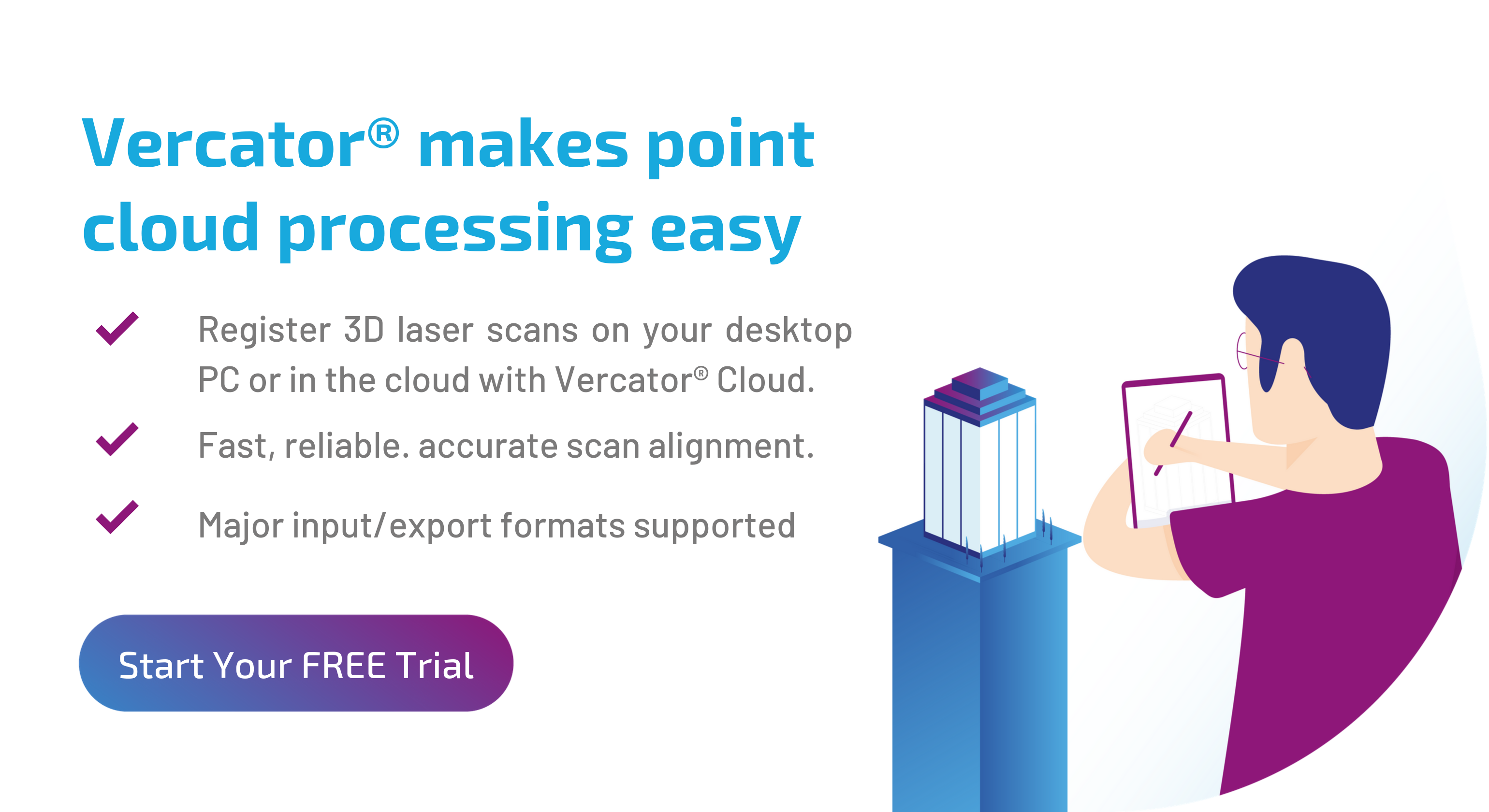What the cloud means for point clouds

With the cloud transforming how businesses of all kinds relate to their IT infrastructure, professionals are left wondering how the cloud will impact them. Point cloud processing generates heavy data demands over variable usage time-frames — a perfect use case for the cloud.
The cloud potentially offers an ideal solution for processing point cloud datasets at speed. Delivering scalable, customisable, flexible and on-demand processing and storage power within a collaboration-friendly environment, the cloud requires changes to resource management and business processes to be appropriately accessed.
The timing of when to jump into the cloud is always difficult, there are many benefits but also much care and planning is needed to exploit the cloud fully and avoid the pitfalls. Here, we are going to look at what the cloud offers point clouds to help you make the best choices about how this evolving technology will impact your IT needs.
On-demand processing power and storage
Cloud processing on services such as AWS, Microsoft Azure, Google or IBM Cloud allows a surveyor to scale up or down their IT requirements as and when required to accommodate increased business needs or changes. You can now support your business growth (or the adoption of an unusually large project) without constantly having to buy new hardware or update your existing IT infrastructure.
The unique advantage of cloud services is also the ability to turn the compute power off completely. In batch-type applications such as point cloud processing, turning off the cloud compute power once used is a major cost-saver.
Cloud services are built to deliver both the processing memory (RAM) and disk storage to handle very large amounts of data. Terabytes of RAM and petabytes of storage will be available to cope with the inevitable increase in both the use and size of point clouds. The processing capabilities available are also being upgraded constantly so you can match your needs to best fit configurations.
Access to unlimited processing cores
The ability to scale processing power not only allows you to adopt more projects, but execute a given project at faster speeds when using the right point cloud registration software.
Multi-thread processing was developed with traditional hardware in mind. Cutting edge commercial processors, like the i9-7980EX, have 18 cores. More common i7 variations have between 4 and 10 cores. With hyper-threading, each core is able to execute two processes simultaneously. Some types of point cloud processing software have developed to take advantage of this, processing a separate scan simultaneously on each thread. For an i9, that means you could potentially undertake the coarse registration of 36 separate scans at the same time, assuming RAM and storage resources scale up accordingly.
In the cloud, the number of cores you can access is theoretically unlimited, allowing you to scale out a project to meet the exact demands of your current job. Although the practicalities become limited by bandwidth and cost, the cloud theoretically offers a route to processing an unlimited number of scans simultaneously. For large projects spanning into the thousands of scans, this can dramatically reduce the time it takes to register a project of any size.
Building in flexibility and agility
With many more processing cores, often with higher performance specs than a typical laptop or desktop, cloud services can offer significant speed up. A cloud environment can operate as a pool of resources drawn on as and when needed. There’s no need to tie up your own computer for hours when you can use someone else’s instead.
One of the game-changing benefits of cloud computing is the ability to change the way we do things. With cloud comes the ability to implement what is known as “agile” methods — basically to try things out in a safe and speedy way, learn from what happens (fail fast) and try again.
For point clouds, changing parameters such as normalising point distribution, thinning out data points to understand the trade-off between precision and the number of points needed, and range setting will all have an impact on the size of the file created and the ultimate result. Tweaking these parameters while running on a low-cost (or even free) cloud configuration can really deliver benefits in terms of cost and speed in full production.
Even if you feel there is no need to experiment with the available resources, the cloud still delivers flexibility. You can take on projects of any size without having to make long term IT investments. You can switch on your cloud resources when needed, and switch them off when they aren’t.
Working with others — sharing and updating data
Cloud services enable a business to enhance communication during a project, improving internal and external collaboration. Documents and data can be easily shared within a team with no need to worry about additional hardware purchases for data sharing. It also creates a hardware agnostic dataset, allowing you access to your files on any number of devices
Surveyors will even be able to upload data in the field (something that will become far more practical once the 5G rollout is complete) for immediate registration using cloud servers.
The cloud enables a secure way to communicate with rapid response. You don’t have to be in the office — you are not constrained to one or several machines. For multiple offices and remote teams, collaboration becomes easier with data held in a cloud service. For surveyors working on construction projects, this also provides a great onramp and tool for developing BIM processes for working in close collaboration with other elements of the design and engineering team.
A cloudy future for point clouds
In the short term, bandwidth limitations and legacy hardware investments will preserve the use of local computing resources for point cloud processing. But the processing power offered by the cloud is fundamentally poised to change how the largest point clouds are processed and registered. With the increasing trends of machine learning and AI, cloud services are only going to grow and become more powerful. The advantage for surveyors is that this massive resource will be there to exploit.
Point clouds are an evolving market and how point clouds are registered and processed is changing for local and cloud-based software regardless. For example, advances in vector-based, multi-stage algorithms has meant the amount of time it takes to register targetless scans has been reduced by 40%-80%.
The robust nature of these solutions also offers the ability to automate most of the cross-checks and front-load manual activity. Both of these advances make using the cloud easier — enabling a full embrace of simultaneous registration and reducing the processing powers (and, therefore, cost) of registering large data sets.
As the internet of things and sensor data explodes in size and capability, the ability to combine point cloud data with other sources to create “digital twins” of actual space will become more and more important. Having your data within cloud services will be a given for the internet-of-things/smart cities of the future.
For example, there is a concept, known as data gravity, where data in the cloud will be pulled towards other major sources of data. Basically, you take the software to the data rather than moving the data to the software. By taking advantage of the processing and storage capability of cloud services for point clouds, you take the first steps in ensuring that the new processes and checks needed will be in place for the inevitable move of all industries to a cloud-based future. The cloud will play a larger and larger role in every industry, and surveying is no exception.
Tags: point clouds


